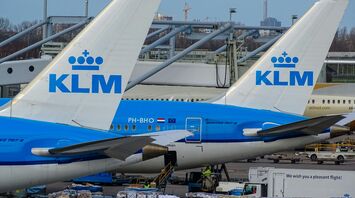KLM Submits Plan for Noise Reduction at Amsterdam Schiphol Airport

KLM Royal Dutch Airlines has presented a comprehensive response to the Dutch government's proposed noise reduction measures at Amsterdam Schiphol Airport (AMS). The airline aims to achieve noise reduction without significantly impacting the economy or the city’s global connectivity.
KLM's New Noise Reduction Response
KLM's plan addresses noise pollution by focusing on fleet renewal, implementing new operational procedures, and utilizing quieter aircraft during nighttime operations. The airline has long opposed flight caps proposed by Schiphol, arguing that such measures would harm the national economy and reduce the country's global connections. KLM believes its noise reduction measures can meet targets without necessitating flight cuts.
Barry ter Voert, CXO & EVP Business Development at KLM, emphasized the airline's balanced approach:
"We believe this is the best way to develop a balanced and effective package of measures to reduce noise impact, while ensuring that we maintain the excellent international connections that are so crucial for the Netherlands, businesses and people in general."
Government and Industry Proposals
The Dutch infrastructure minister Mark Harbers recently proposed annual take-offs and landings of 460,000 to 470,000, slightly more than expected, but with a reduction in night flights from 32,000 to 27,000. Additionally, the loudest aircraft, such as the Boeing 747, would be banned from night operations, affecting cargo airlines that rely on overnight flights.
Areas of Improvement
While some principles from KLM’s "Cleaner, Quieter, More Efficient" plan have been adopted, the airline hopes to resolve key differences with the government. KLM, supported by calculations from the Royal Netherlands Aerospace Centre (NLR), claims that the proposed measures exceed what is necessary and will cause undue economic harm. KLM asserts that noise reduction targets for 2025 can be achieved without flight cuts and that the government’s measures are neither feasible within the provided timeframe nor cost-effective for airlines.
IATA’s Balanced Approach
The International Air Transportation Association (IATA) advocates a 'Balanced Approach' to managing aircraft noise, focusing on four pillars:
- Reduction at Source: Incorporating new technology to reduce noise emissions.
- Land Use Planning and Management: Implementing zoning laws, building insulation, and prioritizing industrial and commercial land around airports to minimize residential disturbance.
- Operational Procedures: Optimizing flight paths, takeoff, and landing procedures to reduce noise.
- Operational Restrictions: Imposing flight restrictions or banning noisier aircraft as a last resort.
In Conclusion
KLM’s submission underscores its commitment to balancing noise reduction with economic stability and international connectivity. The airline's plan highlights the potential for achieving noise reduction targets through technological and operational improvements, aligning with IATA’s Balanced Approach, and avoiding drastic measures like flight caps.



















